Find out whether you can mow wet grass and when is the best time to mow it. Continue reading.
Can you mow wet grass? Short answer: No. Whether it’s early morning and the lawn is still dewy, a rainstorm just ended, or you just ran your sprinklers, you should skip the mow for now.
Please read on for more detailed information.
Why is It Bad to Mow Wet Grass?
It’s not suggested to mow wet grass. Here are the reasons why you shouldn’t mow wet grass:
Uneven Cuts
Grass must stand up straight and not sag as the blade slices through it for a precise, even cut. Consider the distinction between cutting a string that has been pulled taut vs. a loose one.
However, when the grass is wet, the weight of the water prevents it from standing upright. (Read more: Best Time to Water Grass) As a result, rather than cutting the grass cleanly, the mower blades tear through it.
The mower might overlook some of those grass blades that are low to the ground, which is another potential problem. After that, when the grass dries out, you’ll have long, uncut patches, and you’ll need to mow once more.
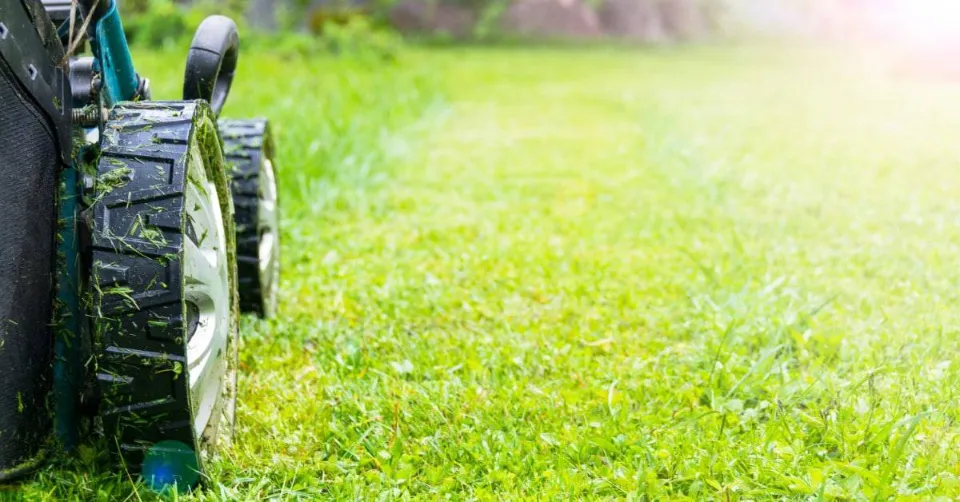
Fungal Lawn Diseases
Those tears in the blades of grass will leave your lawn more susceptible to infection from fungal diseases. The presence of torn grass and standing water virtually ensures lawn disease because fungi prefer moist environments. How Often to Water Grass Seed?
Some common lawn fungi to look out for (especially if you recently mowed the lawn while wet) are:
- Brown patch: Causes irregular circles of brown grass
- Anthracnose:Causes reddish-brown patches
- Leaf spot: Causes small brown spots with darker brown or purplish-red borders
- Red thread: Causes reddish threads of fungus on the tips of grass blades
If left untreated, these and other lawn diseases can weaken your grass and even kill sizable portions of it.
Suffocated Grassroots
Did you know that for the roots of your lawn to develop properly and robustly, they require a constant supply of oxygen? Mowing wet grass can cut off that oxygen supply and suffocate your grassroots, resulting in thin and patchy growth. Why does that happen? There are two reasons.
Compacted soil:When the grass is wet, the soil is also wet. Because wet soil becomes compacted when you roll a heavy lawn mower over it, oxygen can’t reach the roots. The wheels can also cause unattractive ruts in wet soil.
Clumps of wet grass: Mow wet grass has a tendency to clump up. These sizable clumps of grass clippings are left behind by your lawn mower, obstructing the living grass from air, water, and sunlight.
Lawn Mower Damage
Your lawn is harmed by wet grass clumps as well. Additionally, they clog your mower blades, slowing them down and making the engine work harder to turn them. Due to their lack of torque compared to gas lawnmowers, electric lawnmowers frequently have no luck at all cutting through wet grass.
In addition, cleaning the mower’s underside will be much more difficult because the wet grass will stick to it. Furthermore, the mower’s blades and other metal components may rust due to the excess moisture. Will Grass Seed Germinate on Top of the Soil?
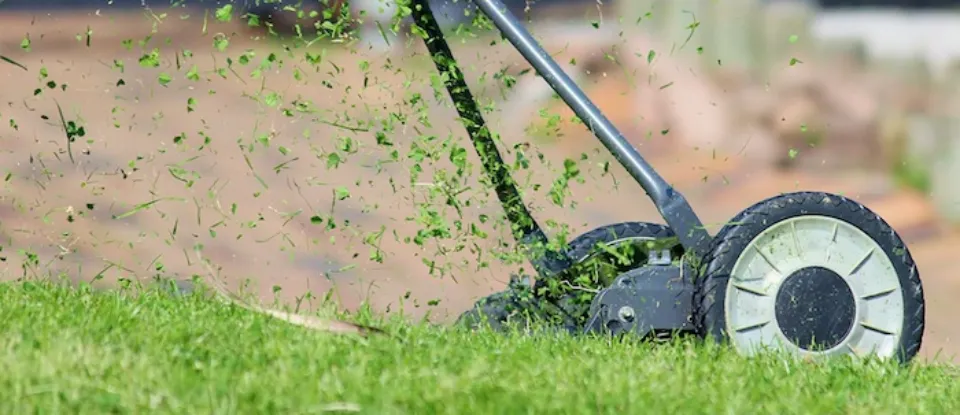
Danger for You
It’s much riskier than it’s worth to mow the lawn while it’s wet. Falling and slipping pose the greatest risk. Whatever traction your sneakers have, they can’t handle slick, wet grass. (How to Make Grass Green?) Falling while operating a machine with spinning blades is even riskier than falling when doing so on your own.
If you’re using an electric corded mower, there’s also the additional risk of electrocution. You’re in trouble if there is even the slightest damage to your extension cord and the exposed wiring makes contact with the soggy grass.
Mowing a wet lawn puts your clothes in danger, too, because cut wet grass stains much worse than dry grass.
If You Must Mow
If the ground is soggy, you have the sinking sensation underfoot, there are obvious puddles, or all of the above, park the mower in the garage. Take Dr. Williamson if your lawn doesn’t fit that description and you absolutely must cut it.
- To cut down on the amount of clippings, increase the mower’s height.
- So that less grass is removed with each pass, narrow the swatch you’re mowing.
Aside from that, unwind while admiring your grass as it dries.
To develop your lawn maintenance strategy, learn how to identify crabgrass. Below will give you a full explanation of what is crabgrass.
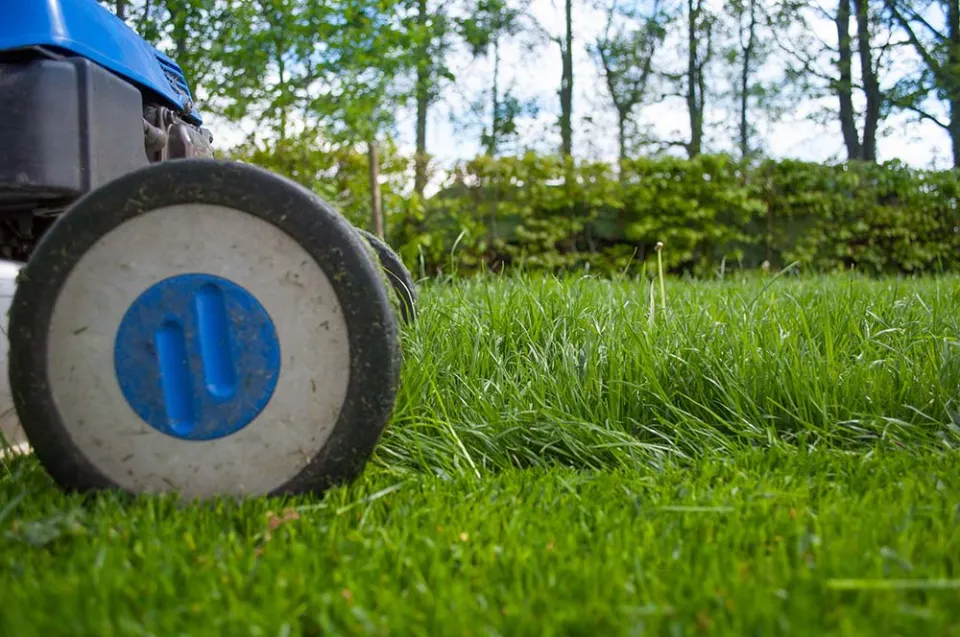
Can You Mow Grass With Morning Dew?
There are mixed opinions on whether to mow wet grass with morning dew. There is no doubt that it is best to wait until your grass is completely dry before cutting it, which in the case of morning dew is likely to only take a few hours. However, there is nothing stopping you from pulling out the mower while it’s still slightly wet.
Mowing in the morning dew is completely acceptable as long as your blades are sharp and the grass isn’t drenched. ‘If you are using a mulching kit, however, you may have a harder time. Mulching blades have a drawback when the lawn is wet, despite how great they are at making grass disappear.’
Always cut dry grass when mowing. It’s bad for your mower and your yard to mow wet grass. If you don’t take care of your mower, wet grass clippings can easily clog it and harm it. These clippings may also be discharged from your mower in large chunks, which may smother your newly planted grass and cause some areas of your lawn to wither or dry out. In addition to dew in the morning, wet grass also refers to after a rain.
How Soon Can You Cut Grass After It Rains?
It’s probably common knowledge that it’s bad practice to mow wet grass immediately after it rains. You might not be aware of why this is the case, how much rain matters, or how long you need to wait before cutting the grass. Do you have to wait an hour or a couple of days? What’s at risk when mowing grass that is slightly wet? How Long Does Grass Seed Last? Here are a few ideas to assist in addressing those queries.
Some mowers may be strained by wet grass, especially if it is tall, and may overheat as a result. However, it depends on the mower. Wetter lawns are no problem for strong commercial mowers with good cutting decks and sharp blades. If you’re not sure if a lawn is too wet, try mowing a row. If your mower gets bogged down, save that lawn for later, if at all possible.
It’s more likely that your mower will miss or simply knock over taller blades of grass when the grass is very wet because it tends to bend over. When the grass dries and stands back up, the blades that “ducked” will stand out, making an uneven cut. Before mowing a lawn after a rain, inspect the grass closely to see if any blades are bent over. It should be okay to mow once they are upright.
Larger clippings are produced by wet grass’ tendency to cut less cleanly. These wet trimmings like to collect in clumps and obstruct the deck of the mower. Although air-tapered decks like the Aero Core make this much less of an issue, you should still use caution and frequently inspect your mower deck when mowing a lawn that has recently rained.
Due to how poorly wet grass mulches, it can come out of the deck in big, heavy clumps. These clumps can squish and ultimately kill patches of lawn rather than evenly redistributing back into the lawn as mulch.
Since the soil is softer and more slick for mowers and the grass roots can be more easily torn out by the mower tires, mowing wet lawns increases the risk of rut damage. Having said that, lighter weight Wright mowers with their large wheels allow you to cut over wetter ground with a lower risk of rut damage. When in doubt, wait if the ground feels soft or appears muddy.
The ideal time to walk through the lawn without wet shoes is when the grass is sufficiently dry. You might occasionally just need to mow grass that is slightly wet because this is not always possible, especially in the spring or in areas of the country that experience more rainfall. You’re best bet when deciding whether to mow wet grass is to follow our advice, make an investment in a good commercial mower, and maintain the sharpness of the mower blades. Contact a local Dealer to find a mower that will meet your needs.
Read about How Long Does It Take for Grass Seed to Grow?
How Do You Mow a Wet Lawn?
The steps listed below will help you mow a wet lawn without damaging it or your mower if you’ve determined that you absolutely cannot wait until the grass has dried.
One note of caution, do not attempt to mow a wet lawn with an electric mower as the combination of electricity and water is highly dangerous and runs the risk of giving you a nasty shock.
- Test the soil. If it feels muddy or your shoes get soaked when walking through it, seriously consider mowing on a different day – mowing in these conditions will do more harm than good and will leave your lawn looking worse than just slightly unkempt.
- If the soil is still fairly solid and the grass is just a little moist then drag an extended hosepipe horizontally over your lawn in an attempt to remove as much water as possible. Direct the water into a board where it can be absorbed by using an action akin to that of using a squeegee on your shower door.
- Because it is harder to mow a wet lawn, your lawnmower will be under more stress. This could harm your lawnmower, especially if it’s an older or lighter model.
- Prepare your mower by ensuring the blades are sharp, this will help to reduce the pressure on your mower and cut the grass a little more easily.
- Place the blades on the highest setting so as to reduce the amount of grass that will clump and cause problems.
- Start by mowing a small row and go slowly– if your mower sounds like it is struggling then stop and wait until the grass is drier or else you could risk your mower overheating and breaking. It might be worthwhile to invest in a commercial mower if you live in an area that receives a lot of rain and have a large lawn because these machines are typically better suited to mowing wet grass.
- Empty the basket often– do not wait until it is full. This will prevent the mower deck (where the blades are) becoming clogged and will also keep everything lighter, reducing the strain on the mower.
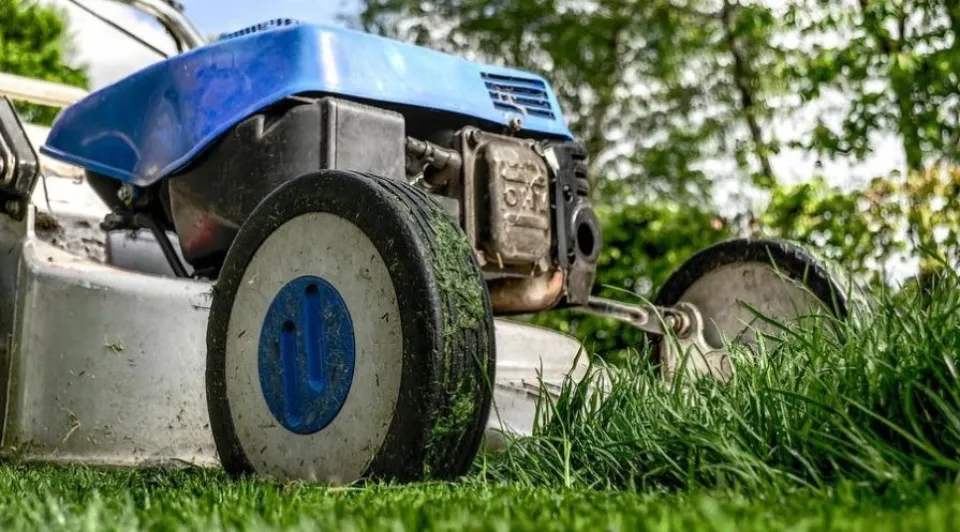
Will Cutting Wet Grass Hurt My Lawn?
Wet grass simply keels over when cut, which causes the blades to miss it. This is one of the major issues with cutting wet grass.
You could end up with a ragged, untidy lawn if the cutting blades catch some leaf blades. In order to cut the wet grass cleanly, the mower blades frequently rip the grass. Fungal infections may develop on these damaged edges.
The weight of the mower can also squish grass blades into the soil below, potentially killing the grass and creating a muddy mess. Mowing wet grass should be avoided for another reason: heavy wet grass clippings tend to accumulate on the lawn rather than in the catcher.
Brown spot and other fungus-related diseases can flourish in these soggy, wet piles. They may even kill the grass underneath, causing brown patches and encouraging weeds to grow where there was previously grass.
The soil will be saturated following a period of heavy rain. Your lawn mower will typically leave glaring wheel ruts when you run it over wet grass. In addition to damaging the grass blades, this can permanently rut your lawn.
Do Some Grass Types Cope Better With Wet Mowing?
We have chosen several grass species that have been carefully chosen and bred to be hardy and resilient in a range of climatic conditions.
The ability to repair itself after damage and a low mowing requirement are likely the two most crucial characteristics to look for in a grass that will tolerate being cut in the wet.
Warm season grasses, like Sir Walter Buffalo, are not only very hardy and will quickly recover from any harm they sustain when mowed in the wet, but they also require less mowing in general.
You should take extra care when cutting your lawn on those drizzly winter days if it receives a lot of winter shade. Kikuyu is a hardy grass that tolerates shade and wet conditions well and is resilient enough to recover quickly after suffering some damage.
Matilda Buffalo performs admirably in the shade and exhibits a remarkable rate of damage recovery.
Beautiful grass varieties that quickly bounce back from damage include Palmetto and Empire Zoysia. The likelihood that you will need to mow in the rain will be reduced by the low maintenance requirements of Zoysia and Sapphire Buffalo.
That’s all there is to it. A few steps can be taken to ensure a great outcome if you must mow a wet lawn. Try to avoid doing so.
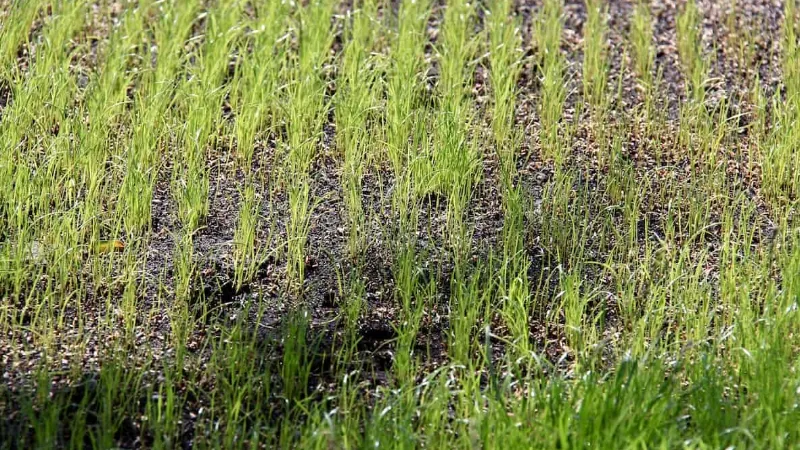
What Mower Are You Working With?
Can you mow wet grass? It’s also crucial to take into account the type of mower you’re using.
Riding Mowers
A riding mower can use wet grass as a skating rink. It’s simple to minimize this risk if you’ve never seen a mower roll over or slide on wet grass, but I strongly advise against it.
On wet grass, any incline will probably cause a riding mower to slide. The last thing you want to happen when operating a riding mower on a hill with wet grass is to tip over or roll over.
This is accurate even when the slope appears to be slight.
On a riding mower, wet grass is surprisingly slick and extremely dangerous.
Electric Mowers
Additionally, for obvious reasons, you shouldn’t use an electric mower on wet grass.
Water is a good conductor of electricity. Thus, the risk of electrocution or electrical shock increases when using an electric mower in wet conditions.
FAQs
How Long You Should Leave a Lawn After It Rains before Mowing?
After a light shower, you should wait between two and five hours, longer if it rained more heavily, before mowing the lawn.
Walking across the lawn in sandals is a good way to check if the grass is dry; if your feet stay dry, it’s okay to get the mower out.
Why Should You Not Cut Grass When It’s Wet?
Lawn health, equipment performance, and user safety are all negatively impacted by cutting wet grass. Pushing a mower across a wet lawn increases your chance of slipping and getting hurt, in addition to the risk of damaging your expensive equipment. Mowing wet grass can also result in ruts in your lawn and the spread of fungus.
Can You Cut Grass After It Rains?
Even though cutting a wet lawn could harm your mower or the grass, there are ways to reduce the issues if you don’t have time to wait. When the ground is still wet, keeping your lawn healthy requires a sharp blade. Alternatively, you can side-discharge the wet clippings by raising your mower deck to 3 inches or higher. However, don’t attempt to mow the lawn if the ground beneath it feels soft to the touch. Instead, wait until it has had time to dry out.
Does Mowing Wet Grass Dull the Blade?
Even though cutting through wet grass won’t necessarily wear down a mower blade, it’s difficult due to its slippery surface. Additionally, if the saturated clippings are allowed to remain on the blade, rust and an early demise of metal mower components like the blade are possible.
When is the Best Time to Cut Grass?
Depending on where you live, you should cut the grass at different times. In the middle of the morning, when the dew has dried but the sun isn’t yet scorching, if your mornings are dewy and your afternoons are hot, you should mow. The best time to mow the lawn is in the morning, even if morning dew is only something you read about in sonnets and it gets hot before breakfast is even on the table.
Summary: Best Time to Mow Wet Grass
While it may be tempting to mow your lawn as soon as the rain stops, it is best to wait until the grass is completely dry. It is best to wait for wet grass to completely dry before mowing. Wet grass clippings can jam up your mower, making it choke and spit out clumps of wet grass that, if left unattended, could smother and kill your lawn.
If you have any questions, please leave a comment. My Prime Home tries to give you the best home improvement information. Don’t forget to share the post. Thank you for reading.
You may want to know:
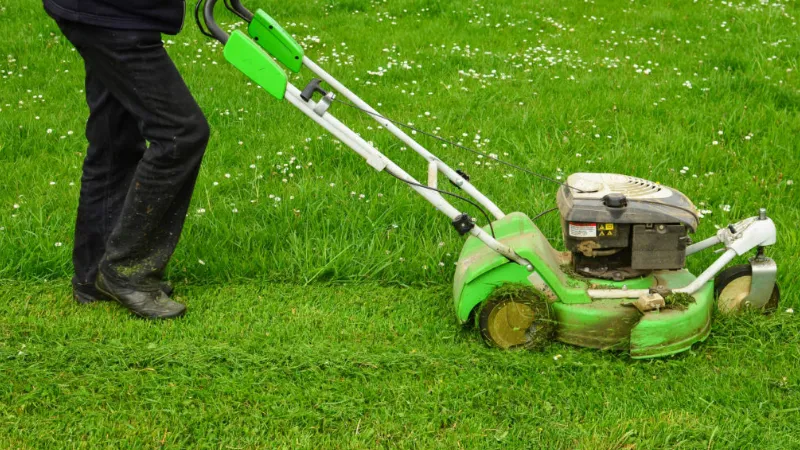
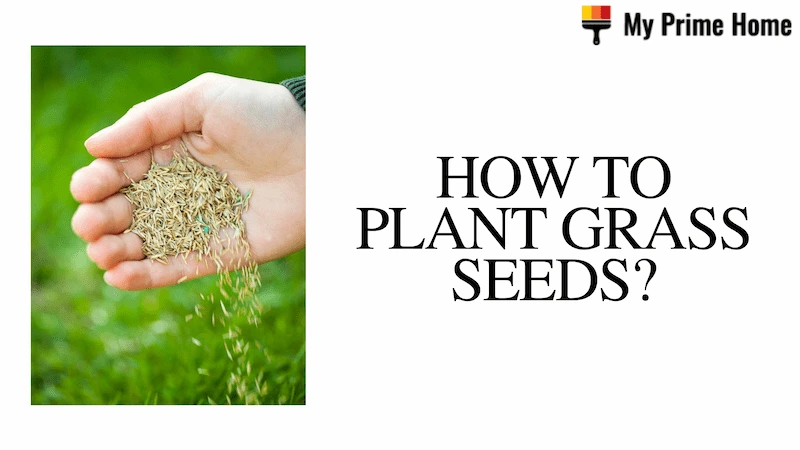

![Best Grass Seed: How to Choose [2023]](https://www.myprimehome.com/wp-content/uploads/2023/02/Best-Grass-Seed-How-to-Choose-2023.webp)